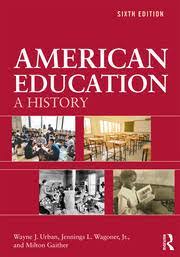History of American Education. 2022 Best

This paper explores the history of American Education. Explain how Waverly Elementary became a “beat the odds” school and how this connected with the Republican education agenda, George W. Bush, and No Child Left Behind?
History of American Education.
Paper details Create a Word document, copy and paste the questions for Parts 5, 6, 7, 8, and Afterword of The Children in Room E4 to your Word document. Respond to each question—your responses for each question will vary. NOTE: The questions will guide you through the reading and highlight important information that you should know and understand. ALSO, you will use your question responses for an assignment that is due this week. Responses will vary. Double space and use Times New Roman, size 12. Children in Room E4: Part 5 Questions for Journal 8. Explain how Waverly Elementary became a “beat the odds” school and how this connected with the Republican education agenda, George W. Bush, and No Child Left Behind?
History of American Education.
(p. 190-192) How might James Thompson (Waverly’s principal) explain Waverly’s success? (p. 192-194) After the Connecticut State Supreme Court ruled in favor of Sheff, the state was obligated to correct “racial isolation” in its schools. Why did the Sheff lawyers file a complaint about how the state responded to the issue? (p. 203-204) As a future teacher, what are your reactions to the chapters about state mandated testing and how it impacted the teachers and students in the urban schools? (p. 208-236) Describe how the Hartford suburban schools differed from the urban schools? (p. 237-239)
History of American Education.
The Children in Room E4: Part 6 Questions for Journal 8 What are the key takeaways you noted about how Waverly elementary students responded to life outside of their neighborhood and their school? (p. 254-265) Describe the negative student-adult relationships at Waverly Elementary. (p. 269-275) Explain how the cooperative writing assignment between the Waverly students and the suburban students related to our guest instructor’s presentation on Friday, December 2. (p. 280-283) How did Supreme Court decisions (p. 286-288) reverse gains made by Brown v. Board of Education? Sheff lawyers visited the University of Hartford Magnet School, a school that had successfully integrated urban and suburban students. However, the Sheff lawyers were still not satisfied with the state’s progress to address racial integration. Why? https://youtu.be/jLpBlAn09ns
History of American Education.
(p. 293-298) Children in Room E4: Part 7, 8, and Afterword Questions for Journal 8 Part 7 1.What are your final thoughts about Milo Sheff, Ms. Luddy, and the changes at Waverly Elementary? (p. 315-333). Part 8 Read the statement made by John Brittain in the middle paragraph on p. 336. What are your thoughts and reactions to this statement? Afterword How do desegregation and integration differ? (p. 343-344) Starting on p. 345, Eaton discussed significant research findings and other evidence about the effects of desegregation, integration, poverty, etc. Explain some of these important findings. All questions have page numbers where answers can be found. Book: The Children in Room E4 ISBN: 978-1-56512-488-2
Additional Files







